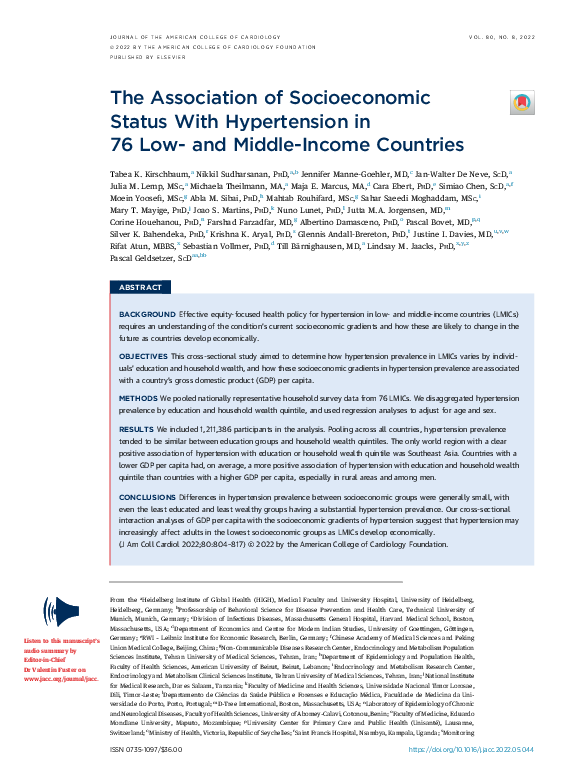Journal Article
The Association of Socioeconomic Status With Hypertension in 76 Low- and Middle-Income Countries
Background
Effective equity-focused health policy for hypertension in low- and middle-income countries (LMICs) requires an understanding of the condition’s current socioeconomic gradients and how these are likely to change in the future as countries develop economically.
Objectives
This cross-sectional study aimed to determine how hypertension prevalence in LMICs varies by individuals’ education and household wealth, and how these socioeconomic gradients in hypertension prevalence are associated with a country’s gross domestic product (GDP) per capita.
Methods
We pooled nationally representative household survey data from 76 LMICs. We disaggregated hypertension prevalence by education and household wealth quintile, and used regression analyses to adjust for age and sex.
Results
We included 1,211,386 participants in the analysis. Pooling across all countries, hypertension prevalence tended to be similar between education groups and household wealth quintiles. The only world region with a clear positive association of hypertension with education or household wealth quintile was Southeast Asia. Countries with a lower GDP per capita had, on average, a more positive association of hypertension with education and household wealth quintile than countries with a higher GDP per capita, especially in rural areas and among men.
Conclusions
Differences in hypertension prevalence between socioeconomic groups were generally small, with even the least educated and least wealthy groups having a substantial hypertension prevalence. Our cross-sectional interaction analyses of GDP per capita with the socioeconomic gradients of hypertension suggest that hypertension may increasingly affect adults in the lowest socioeconomic groups as LMICs develop economically.




